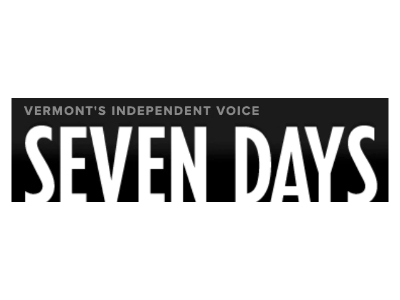
Spend some time poking around old Vermont churchyards and cemeteries — such as those in Arlington, Bennington, Chester, Dorset, Rockingham and Westminster — and you might spot some odd, eerie or downright bizarre imagery etched into the centuries-old gravestones. Amid the names of the deceased and their dates of birth and death, sometimes you’ll also see geometric patterns that appear as though the stonecutter drew them with a protractor: spirals, whorls, daisy wheels and hexafoils. Other gravestones bear the carvings of hourglasses, coffins within coffins, skulls sprouting wings, and disembodied heads that resemble cartoon characters or bug-eyed extraterrestrials. Such hieroglyphic-like etchings, which to us seem merely decorative, actually have their roots in Puritan culture, and their meanings would have been instantly understood by New Englanders 300 to 400 years ago. In fact, as Jen Bartlau of the Cambridge Historical Society explained, many of these symbols were once so common that they appeared in primers to teach children their ABCs, with their presence on cemetery stones serving a similar instructional role. “For about 150 years, this is what you saw on tombstones: a final warning or lesson from the deceased,” said Bartlau, 56, who gives presentations at libraries and historical societies about Puritan-era grave symbology. Memento mori, a common Latin phrase etched into many old gravestones, “doesn’t mean ‘Remember me,'” she added. “It means, ‘Remember: You, too, shall die.'” Bartlau is neither a professional historian nor an expert on Puritan theology. But for more than three decades, she worked as a genealogist, often conducting her research the old-fashioned way: by perusing the headstones of old New England cemeteries. In the past few years, she became curious about the meanings behind many of the symbols she encountered, then sought to understand their historical context. Some have personal significance to her, as they appear on her ancestors’ gravestones. Those whorls, spirals, four-armed crosses, and circles with dots, mesh or webbing? They are what Bartlau calls “apotropaic witch marks” — symbols, markings or “demon traps” that the Puritans believed would ward off evil spirits. Although the Puritans considered it sinful to practice magic, she said, they hedged their bets, if you will, by using counter-magic to protect themselves and their loved ones. Like the hex charms that the Pennsylvania Dutch hung over barn doors, counter-magic symbols were commonly etched into walls, buried beneath floorboards and carved near wells to keep evil…
What Lies Beneath the Cryptic Symbology of Old New England Tombstones

